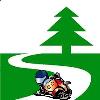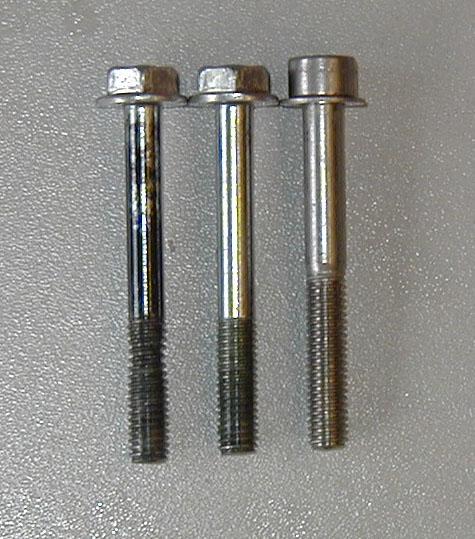-
Posts
4,245 -
Joined
-
Last visited
-
Days Won
65
Content Type
Forums
Profiles
Gallery
Blogs
Downloads
Events
Everything posted by JZH
-
In the end, I didn't get a chance to take that last ride. Too busy getting the house ready for the movers. Part of which involved draining all the oil and gasoline from the bike, so as the deadline approached I couldn't justify "wasting" time on the bike when I was already struggling to deal with all the other moving preparations. FYI, six year-old gasoline (with a generous amount of Sta-Bil) works just fine in a rental car! Anyway, the bike is now in a crate on a container ship heading through the Panama Canal, I presume. We'll see what the Dutch authorities make of it... Or maybe I'll have to take it to the UK? Ciao, JZH
-
To bring this back to the original post, the OP has a 4th gen engine and an 837cc big bore kit, but was wondering if the installation of those pistons would require sleeving the block/case. In that case, no, installation would not require sleeves. As evidence I offer: My RC36's 837cc engine was bored, not sleeved, and if sleeves had been required they would have been included in the kit. (I'm pretty sure they were included in the Dynamo Humm 5th gen 870cc kit.) Please note that, according to Brian Law ~25 years ago, boring the RC36 engine case properly can be very tricky. Choose your engine-builder/shop carefully. Bryan seemed to rate TTS in the UK (where my big bore kits were installed), but I recall him saying that VFR engine cases had been ruined by other shops which didn't know what they were doing. (Also, don't expect a huge increase in power! I did mine because I could. It is very hard to justify the expense of this kind of mod. A VFR750F will never be a CBR1000RR.) Ciao, JZH
-

My VFR800 mod related questions and thoughts.
JZH replied to RdChinoy's question in Modification Questions
https://www.bike-parts-honda.com/honda-motorcycle/800-MOTO/VFR/2002, for parts reference. Or CMSNL. What are the two characters following "RC46" in your bike's VIN? That is how you tell which market the bike was originally intended for (presumably, not India!) Ciao, JZH -
Not on my engine! 840 = no sleeves. The "kit" consisted of pistons, rings and pins--and nothing else. IIRC, there was also a TTS 840 kit for the 5th gen, which did not require sleeves. (That may be the one I bought several years ago which is still in my garage somewhere.) Ciao, JZH
-

Looking for input on ordering parts from Japanese Vendors
JZH replied to mello dude's topic in Modifications
Isn't the rear wheel the same for all 5th & 6th gens? (Apart from paint.) Ciao, JZH -

Any fellow '99 owners can help me with understanding key blanks?
JZH replied to primalkenja's topic in Fifth Generation VFR's
Back when the Honda Parts Catalogues were paper, the spare key blanks were listed separately in the front. There were very few different key patterns at least through the 1990s. There were more different blanks in use by the 2000s--with longer keys used for bikes equipped with HISS (in Europe and Oz). In the Electronic Parts Catalogues the key blanks are still shown, but they are shown in the chassis section with the handlebars and ignition barrel. Ciao, JZH -
Yeh, Vesrah is fine (or used to be). I've used them before, too. Ciao, JZH
-
FYI, some markets don't have "VIN plates" riveted to the frame; instead, they use VIN stickers located elsewhere (but the rivet holes in the frame remain). The VIN should be stamped into the headstock, regardless, however. If the frame has been replaced, the headstock would have come blank (and need to be stamped) and there would be no VIN plate or sticker (which would need to be swapped). Frame replacements are exceedingly rare (but I do have one for another model Honda--it is completely blank). Under the seat should be a small, white paint code sticker indicating the bike's OEM paint color and code. Under the numberplate there might also be a paper barcode sticker--but, being paper, this may not have survived. Ciao, JZH
-
I have to say that is some serious German engineering going on there! If you need any other Honda tool dimensions, they are in the Honda tool catalogue. I think I posted a scan of it some years back. Ciao, JZH
-
(Hey, it's only been a few giant tortoise years!) I was thinking about this bike today because I'm heading to California tomorrow for the first time in about six years. I'll see if it is in any state to ride one last time around the ol' stomping grounds where I grew up. I'm sure I will be back to California--but not on this bike. No, not because I'm selling it (sorry!), but because I'm finally selling my house there and shipping everything to Europe--including this very special bike. It was built with memories, good and bad. I had mentioned in the first post that I had bought the A&A kit in December 2008, but I didn't mention that was just after I had lost both my parents that year. That was the beginning of a rough few years, but working on this bike probably helped me get through them. (Not to mention my family!) I seem to recall that the PCV issue has been resolved since I last tried it in, er, 2012? Anyway, I will have another look when it's "over there" with me. Wish me luck! Ciao, JZH
-
This picture, of one of my old bikes, shows what happens over time when grit builds up in the end of the swing arm (it enters through the big openings next to the shock). As you can see, the bearing carrier has a casting feature that can catch on any grit which protrudes above the level of the machined part of the swing arm when you attempt to rotate the bearing carrier for chain adjustment. Once the pinch bolt is loose, there is nothing which should require hammer force to rotate the carrier. (You can also gently open the swing arm carrier opening even more by inserting a large, flat blade screwdriver into the split.) I don't see any real need for lube on these parts. Ciao, JZH
-
Please post your latest Turing Test results, and we'll go from there! Ciao, JZH
-

TRANSMISSION COUNTERSHAFT OIL SEAL
JZH replied to scup33's topic in Third and Fourth Generation VFR's
Indeed. The same applies to "standard" o-rings, seals and bearings for which dimensions are shown in the Honda Parts Catalogue. Not all dimensions are listed, and some which are listed are not "standard", so this trick doesn't always work, but Honda often massively overcharges for "standard" parts like those. Find some local or internet sources for standard automotive hard parts and you can save a bundle. Ciao, JZH -

BST Carbon Wheels OEM Front and Rear Replica Set @ €3.500
JZH replied to Resina's topic in Fifth Generation VFR's
Sorry to say, but I seriously doubt there are 24 more people willing to spend that kind of money on an old sport touring bike. I think you're probably better off going single-nut if you're looking for that level of bling. Ciao, JZH -
From memory, I think the rubber is more like 2-3mm thick. Ciao, JZH
-
-
I'm not a painter (nor an artist!), but everything I've heard about Honda paint colours is that there are only a few sources which even try to reproduce the Honda motorcycle paint colors (ColorRite in the US being one, RS Bike Paint in the UK being another). (Although a recent Google search suggests there may be more than I had thought!) Professional paint matching is quite sophisticated these days, so showing the old mudguard to an automotive paint supplier in Italy would probably be your best bet. Ciao, JZH
-
Webike in Japan is legit. But expensive! I've used them in the past with no issues. You could also just buy a sheet of rubber and cut them out. I have a set of hole punches for this, but you could even cut the holes out if you've got a steady hand with a scalpel... Ciao, JZH
-
I'd just like to emphasise that it is really, really cool that you're doing this. There are ways to make parts for our bikes even after all the OEM parts are gone, and fortunately there are more and more ways for enthusiasts to make certain parts themselves, e.g., 3D printing and CNC machining. We're entering a brave new world of trying to keep our ICE-vehicles going long after the OEMs have abandoned them. Ciao, JZH
-
You could find another Honda motorcycle from that era which was NH-254M from the factory (do some searches on bike-parts.fr), and buy a small-ish part like a front mudguard on eBay to check the colour. There's no guarantee (and I would think no reason to believe) that the re-spray was done using an OEM Honda paint colour. People usually re-spray with whichever colour they like and have easy (cheap!) access to. There are a few places you can buy supposedly OEM Honda paint colours, but it's not sold by Honda, and there's no guarantee it will match whatever you've got on there... Ciao, JZH
-

Can Tyga RC36-2 exhausts & fairings be fitted to RC36 ?
JZH replied to BabyBlade34's topic in Exhaust Systems
You can definitely fit the entire exhaust system from early on late, and vice versa, but not just the end can. As the captain notes, the little side fairing may also not fit, but everything else should clear. (Oh, and the early model's center stand bracket will interfere with the late model's exhaust, so you'd have to delete that if you have one.) The engines are pretty much the same, but the frames are not. That is probably the main reason why aftermarket fairings for the other version of RC36 won't fit. You'd not only have to change all the bodywork, but also the tank, seat and probably the entire frame and sub-frame. Other than that, it's bolt-on! Ciao, JZH -
There is (or was) a complete gasket set from Honda, actually Kit A and Kit B (top and bottom of engine, I believe), but they may not be available anymore from Honda. Athena seems to be the usual aftermarket replacement brand, but all I see online are kits for VFR400s, RC24s and RC30s... Good luck. Ciao, JZH
-
My RC36 is an 837cc, and although the pistons were purchased in the UK in the early 2000s, I believe they were sourced via Dynamo Humm (because Brian owned the piston spec used by JE to make them). Unfortunately, I don't know which jets are in the carbs. However, if you're going to get the engine tuned on a dyno (which would be wise, considering the set-up), the tuner should have a gazillion Keihan jets in stock to choose from. I might also have some info on an old Factory Pro Racing jet kit I have/had. But I'd have to dig around for it. ISTR I might have a photo of the instruction sheet (incl. jet sizes, albeit maybe those were Dynojet jets)? [Found the Factory Pro data sheet. It is for the early RC36, which may not be useful to you.] Ciao, JZH VFR750F Factory Jet Kit Setup Sheet (1997).PDF VFR750F Factory Jet Kit Tuning Guidelines (1996).PDF
-
If it's a Honda sport-ish bike from the '90s to '00s, your fork spacing choices are: 182mm, 192mm, 204mm or 214mm. I have the 5th gen at 204mm. Ciao, JZH






